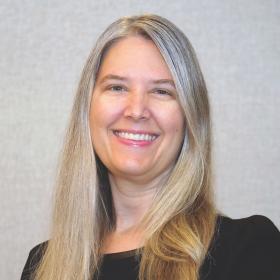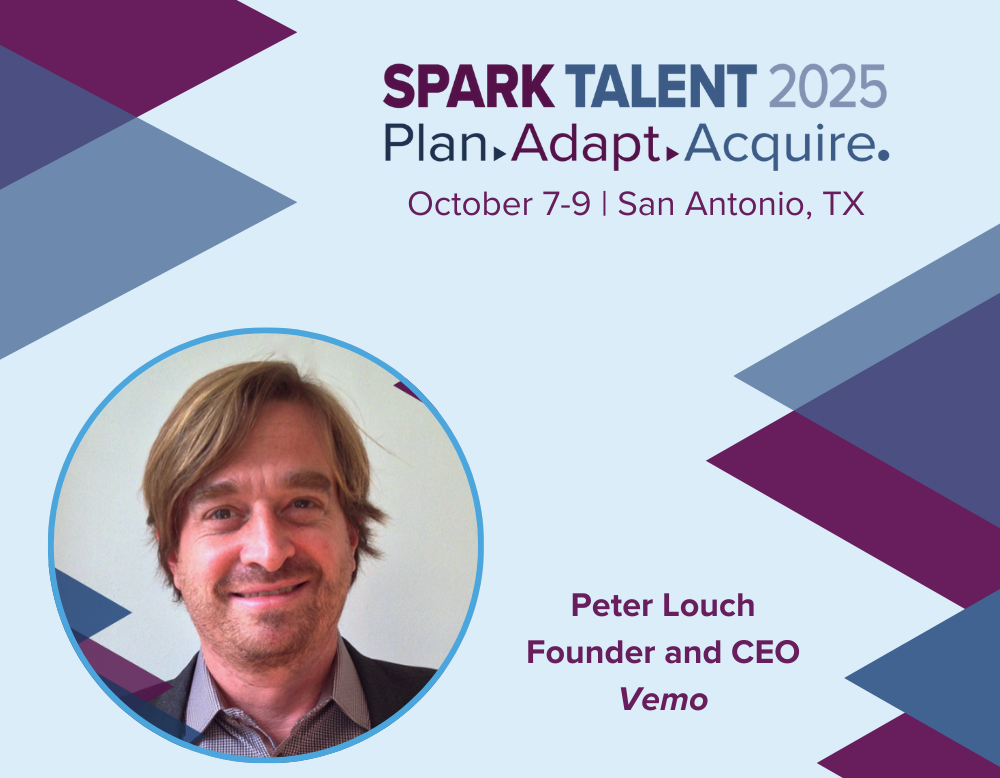Vemo CEO on AI’s Timesaving Edge for Workforce Planning
Author


Behind in workforce planning due to cumbersome manual processes and rapidly changing talent needs?
Try AI, Peter Louch advises, to help you with continuous workforce planning.
“If you can shorten that planning to action time horizon, you’re doing better than the average participant in this area. … [And] continuous planning doesn’t mean that you’re doing it all the time. It means that you can do it at any time,” he says.
Louch is the founder and CEO of Vemo, Inc., and speaker at the upcoming SPARK TALENT 2025. Vemo is a leading supplier of cloud-based workforce planning and predictive analytics software and services.
Astrophysics major turned entrepreneur, Louch saw connections between problem solving for the universe and writing code for sales problems when he worked for an organic agriculture company while in college. Attracted to the business side, he ended up at Monster and was involved in the switch from traditional to internet hiring.
As he continued in his career, he said he was “shocked by how companies just hired people with no plan.” From there, Louch said he found opportunities to use statistics to help solve workforce issues, which “morphed into a whole predictive modeling ecosystem.”
HR Daily Advisor sat down with Louch to talk about how AI is transforming workforce planning, a topic he’ll be addressing at SPARK TALENT. Here’s a sneak peek into his presentation and takeaways:
AI powers continuous planning
How people work is evolving so fast, and the skills that are needed are changing so rapidly that HR leaders can’t keep up with the demand without help. If HR is spending too much time on workforce planning, “the game has changed by the time you want to get there.” Louch explains that using AI in workforce planning is a way to assist HR.
“It’s dramatically increasing forecast accuracy. It’s becoming a front end to planning as a real assistant to planners. So basically, it allows [HR] to look at a prediction of the most likely future plan and respond to it rather than build it up from scratch. So, it allows you to instantly jump in planning the moment you’re ready to do it. … [And it] powers continuous planning.”
A shortened time cycle to action is one of the biggest immediate benefits for using AI in workforce planning.
Louch says, “You’re able to see very quickly what your plan is and measure it quickly and act quickly. And so the forecasting, that’s what’s bringing about [the] ability to get to … a timeline that you can act upon, as opposed to a thinking exercise.”
Right person, right job
AI can also help HR leaders with skills-based hiring, by identifying people who have the skill sets needed to meet business goals.
“AI opens up possibilities of faster data processing and also more automated decision-making where … [it] opens up this right fit. Now you have these great resources and people, employees, contractors, third parties in your system and you’re finding the right work for that person; you’re engaging them,” Louch says.
And once they’re hired, “they want to continue to work because they’re always working on the right projects for their skills and growing them,” he says.
Rehire on the inside
And speaking of the right people, planning who to hire doesn’t always have to come from outside your company. AI can help you forecast the internal mobility of your workforce.
Louch says, “I think people, they’re always looking for the answer on the outside. Really, there’s all these people to rehire on the inside.”
Using forecasting to hire internally creates a culture that maximizes talent development and career growth, and becomes a place where employees are reluctant to leave.
“All this planning and knowing what you want in advance allows you to be an employer of choice. It allows you to know what you want, you can forecast the mobility of your current workers, you know where they’re likely to go. You can shore up those gaps more readily because you’re looking several years in advance and you’re doing the most by your workforce,” he says.
Overcoming challenges of AI and workforce planning
Using AI for your workforce planning can shorten the time it takes to action, but Louch says one challenge to adopting AI’s use is the fear factor.
“I think certain people are just afraid of using it still in some way—and I’m not even talking about the newfangled Gen AI—I’m talking about just fundamental basic decision machine learning that people have been using for years and that the world runs on. … But we’re afraid to apply it to people.”
Louch also thinks a lot of people can get oversold on AI.
“Everybody has such a high expectation. They’re like, ‘Hey, AI does all of it.’ It’s the starting point. It’s not the ending point. It’s basically saving you all this time. It’s giving you all these insights, but you’re not seeing the backseat of the car. You’re still driving. You’re still deciding the destination because the map can’t tell you where you’re going.”
Executive buy-in can also be challenging because the C-suite is constantly bombarded with messaging about how AI is changing business. And with so many options and versions of AI, how do they know what to trust?
Louch says executives should consider that AI is not competing against other investments that leaders have made in their HR systems.
“It’s bringing all the data together. It’s really orchestrating it. And it’s getting more value from it.”
If you’re interested in hearing even more from Peter Louch, please join us live in San Antonio at SPARK TALENT 2025, October 7-9, 2025. You’ll also hear from other speakers from ADM, The Hershey Company, Nutrien, PepsiCo, GE Healthcare, Hyatt Hotels Corporation, The Coca-Cola Company, and more. Get practical strategies focusing on workplace planning, talent acquisition, and AI-driven processes, with plenty of opportunities for you to connect with the HR community.
This article is presented in partnership with HR Daily Advisor. HR Query is a Q&A series by HR Daily Advisor that focuses on HR professionals' insights on current HR trends and dives into their personal stories, helping HR peers connect with challenges and opportunities.

Author

